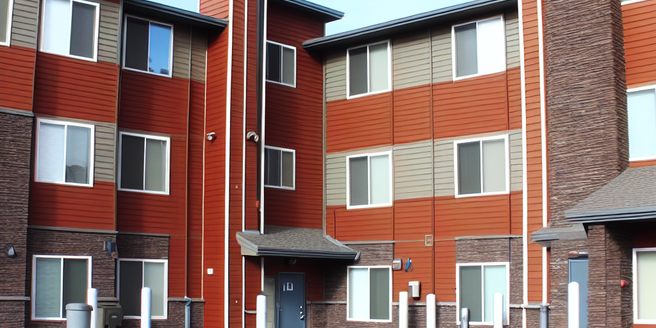The need for affordable housing
The alarming rate at which global population and urbanization are increasing has led to an escalated demand for affordable housing. Not only is the lack of affordable housing a challenge to individuals, it also puts immense strain on government resources and policies. In the current economic setting, finding a budget-friendly home is a struggle for many, particularly in urban areas. Interestingly, technological advancements and smart city solutions can play an important role in addressing this issue. The dearth of affordable housing hampens social and economic progress and remains a pressing issue worldwide. It is thus critical to explore innovative strategies to increase affordability in the housing sector.
Traditional methods vs. innovative approaches
Traditional building techniques in housing construction are often expensive and waste-intensive, posing hurdles to efficient housing development and affordable homeownership. Their environmental impact is also significant, while their scalability limitations may delay project completion and necessitate quality compromises.
In the 21st century, however, new approaches are emerging that utilize advanced design methodologies and innovative materials to tackle these issues. These techniques aim to reduce construction costs and systematically address the housing crisis, emphasizing eco-friendliness through the use of sustainable materials and waste reduction. This approach not only alleviates the financial strain of waste management but also aids environmental conservation. They also enhance scalability to ensure timely project delivery without quality or sustainability trade-offs.
In essence, the marriage of these contemporary methods and innovative materials seeks to revolutionize housing construction by reducing costs, fostering environmental stewardship, and improving scalability.
The role of technology in housing design
Integrating modern technology in architectural design has become a pivotal factor in creating affordable residential structures. Innovative technologies, such as 3D printing and prefab construction, yield significant reductions in time and financial costs required in house construction. Not only do these technologies save time and money, they also enable residents to customize homes according to their specific needs, shifting from mass-produced houses to personalized spaces. Furthermore, these technologies allow for energy-efficient housing design, aligning with green building standards, reducing energy consumption, and lowering living costs. They also aid in creating sustainable structures with less waste, minimal environmental impact, and a smaller carbon footprint, aligning with global sustainability efforts. As such, these technological advancements are revolutionizing the housing sector, making it more affordable, customizable, energy-efficient, and environmentally-friendly.
Case studies: Successful innovative affordable housing designs
Affordable housing design innovations, visible in projects worldwide, are the result of continuous efforts by various institutions to find practical solutions that challenge traditional construction methods. Many communities are implementing the principle of modular housing, also known as off-site manufacturing, which allows the construction of components in factories before shipment to the site. This method reduces on-site construction time, costs and maintains superior quality due to a controlled environment, making it preferable for affordable housing projects. Other innovative projects have demonstrated the use of 3D printing, which reduces waste, labor costs, and opens a world of design possibilities while keeping costs minimal. Techniques in 3D printing enhanced the creation of diverse architectural structures, from single-unit dwellings to multi-story residential buildings, making affordable housing more accessible, providing a sustainable solution to the global housing deficit. These innovations, with the right support, could address widespread housing inequality.
Challenges in implementing affordable housing innovations
Several significant challenges act as barriers to the adoption of affordable housing solutions. These blockades include regulatory hurdles such as legislative and bureaucratic impediments, and a deficiency of specialized industry professionals. Resistance to change makes breaking traditional thinking barriers harder, highlighting the need for durable, cost-effective, and aesthetically pleasing construction. Balancing cost-effective methods, high quality, and aesthetic appeal adds complexity to the implementation of sustainable affordable housing solutions. The development of affordable housing solutions faces substantial obstacles, yet the necessity of innovating within this critical field remains crucial.
The future of affordable housing design
Looking forward, affordable housing design must prioritize creating homes that are not just budget friendly but also sustainable, durable, and aesthetically pleasing. In this evolving landscape, it is also imperative that these housing options are accessible for those with mobility challenges. As such, architects and designers must ensure that their designs incorporate the necessary features to accommodate these individuals. Embracing technology and innovation will be key to meeting these needs. The sector looks forward to more research, public-private partnerships, policy change, and education to propel it into a future where affordable housing is a reality for all.



